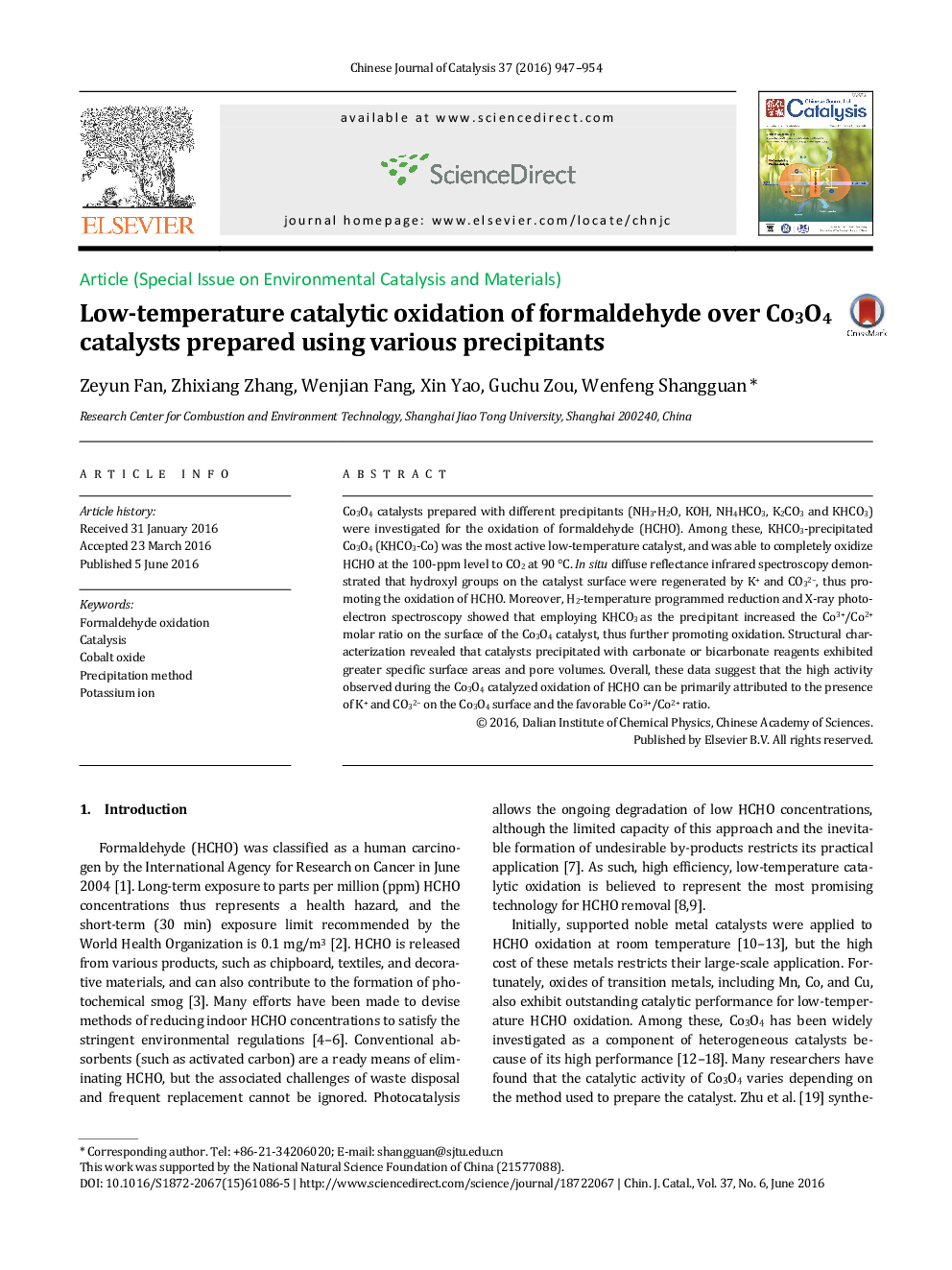| Article ID | Journal | Published Year | Pages | File Type |
|---|---|---|---|---|
| 59592 | Chinese Journal of Catalysis | 2016 | 8 Pages |
Co3O4 catalysts prepared with different precipitants (NH3·H2O, KOH, NH4HCO3, K2CO3 and KHCO3) were investigated for the oxidation of formaldehyde (HCHO). Among these, KHCO3-precipitated Co3O4 (KHCO3-Co) was the most active low-temperature catalyst, and was able to completely oxidize HCHO at the 100-ppm level to CO2 at 90 °C. In situ diffuse reflectance infrared spectroscopy demonstrated that hydroxyl groups on the catalyst surface were regenerated by K+ and CO32–, thus promoting the oxidation of HCHO. Moreover, H2-temperature programmed reduction and X-ray photoelectron spectroscopy showed that employing KHCO3 as the precipitant increased the Co3+/Co2+ molar ratio on the surface of the Co3O4 catalyst, thus further promoting oxidation. Structural characterization revealed that catalysts precipitated with carbonate or bicarbonate reagents exhibited greater specific surface areas and pore volumes. Overall, these data suggest that the high activity observed during the Co3O4 catalyzed oxidation of HCHO can be primarily attributed to the presence of K+ and CO32– on the Co3O4 surface and the favorable Co3+/Co2+ ratio.
Graphical AbstractThe K+ and CO32– on the surface of Co3O4 would regenerate hydroxyl groups consumed in the reaction, which would be helpful for catalytic oxidation of HCHO.Figure optionsDownload full-size imageDownload as PowerPoint slide
